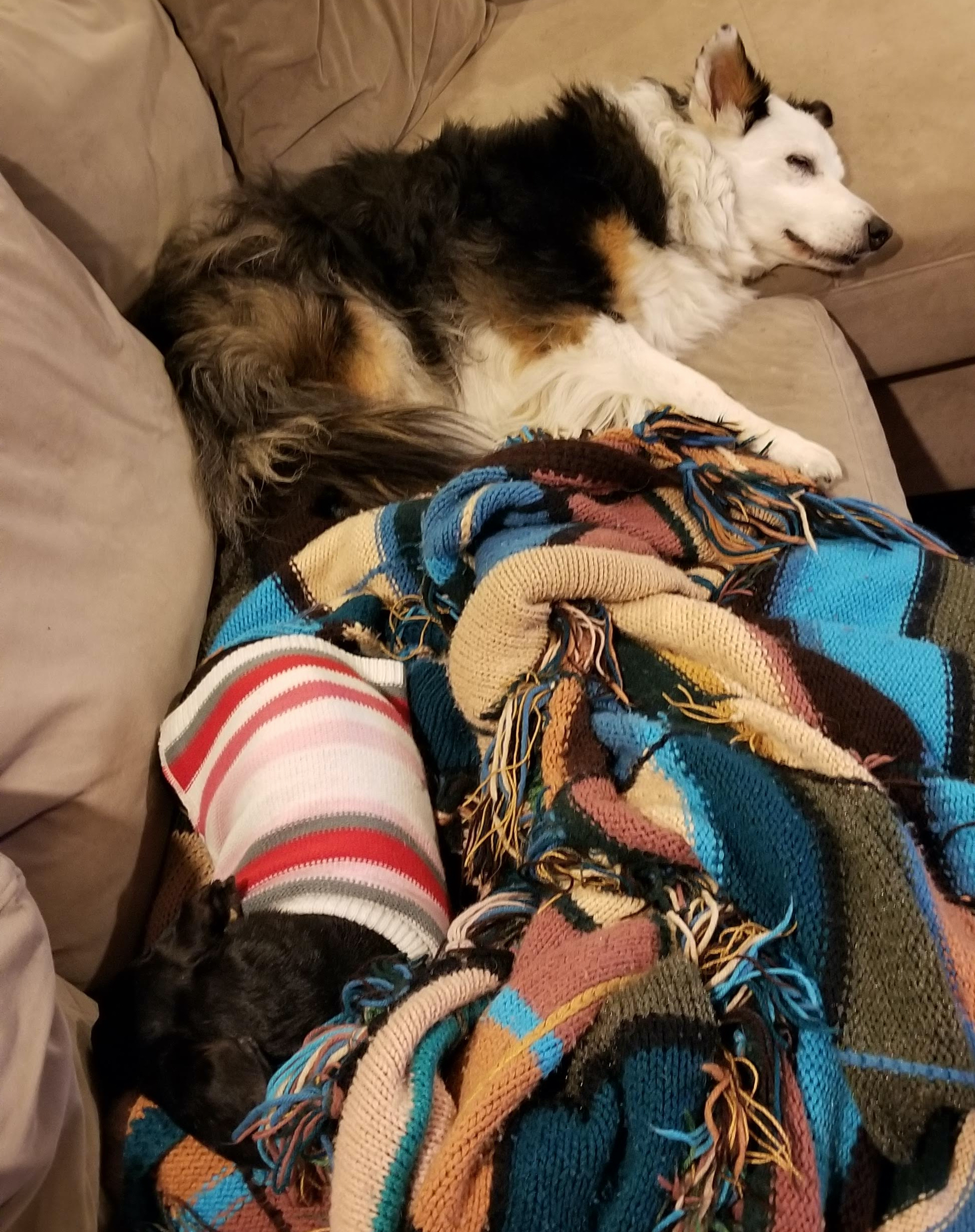
A version of this article appeared in this week’s It’s Not Just You newsletter. SUBSCRIBE HERE to have It’s Not Just You delivered to your inbox every Sunday.
🌞 Well hello! I’m so glad you’re here. This week: Finding hope in the rubble of this month, evidence of human kindness, and a Beirut comfort cat.
OUR FRAGILE OPTIMISM
I remember the last time I had to choose between optimism and fear, between hope and the urge to run away. It was right after 9/11. I had babies—one so tiny she was still curled up like a fern, the other toddling around gumming everything she could get her little starfish hands on. And as their brand-new lungs took in the smoke that blew over to Brooklyn from the burning towers, I wanted to pack them up and flee to some safer place.
The very act of having a child is an optimistic bid on the future—one you won’t even be around to see. You learn that it’s your job to tell these little creatures that everything’s going to be O.K., despite all evidence to the contrary. To do that, you have to find your own way toward hope—there’s no better insincerity detector than a little kid.
So you say to yourself: Yes, these babies of mine will be able to make a good life in a peaceful place. Yes, there’s still time for the nations of the earth to get it together and mitigate climate change; and yes, the arc of their history will bend toward justice.
Then, for the next 20 years, the world challenges that audacious optimism. So time and again you must find it within yourself to choose hope—not for yourself but for them. You look for the helpers, as Mr. Rogers would say. Or do your utmost to be a helper, rather than get dragged down into a bog of despair.
These days hope requires fighting the algorithms of anger on social media in addition to the ancient parts of our brain that pull us toward catastrophizing. We are wired to scan constantly for threats. It’s a trait that kept us alive in hunter-gatherer times, but now it may have the opposite effect. We’ve learned that rage spreads faster online than joy and outrage is contagious.
As it turns out, optimism is a hothouse plant; it needs constant tending.
So my practice lately is to remind myself that for every guy wearing a Camp Auschwitz Staff sweatshirt, there are many more Officer Goodmans stepping in between us and hate.
Nonetheless, these past few weeks have reminded me of the months after 9/11. Maybe it’s the sight of the Capitol surrounded by rows and rows of soldiers, fences and barbed wire, and people using terms like “Green Zone.” Back then we wondered, as we do now, whether we had hit some sort of dividing line of America Before and After.
We hope this horrible month is a finite moment, that we’re hitting our absolute bottom—the nadir of two simultaneous disasters, a deadly pandemic and equally deadly cultural divisions. And after this we rebuild. But we worry this will be a long battle, with continued attacks and internecine animus.
“It is natural to wonder if America’s future is one of fear,” President George W. Bush said in a speech to Congress on September 20, 2001. “Some speak of an age of terror. I know there are struggles ahead and dangers to face. But this country will define our times, not be defined by them.”
So how do we define these times? Dare we get attached to the idea that ramped-up COVID vaccine distribution and economic aid will bring relief before the end of the year, and that we will steadily coalesce against hate? I guess we will have to believe it is possible for the sake of the next generation, and for our own sanity. As philosopher and psychologist William James put it: “The greatest weapon against stress is our ability to choose one thought over another.”
My kids are big now. Grown, but not yet in charge of the world they live in. So we’ll define these times together. But I can’t help thinking that these children of 9/11 are coming of age just as it feels like we’re coming apart. I look at my 19-year-old, and in her profile, I can still see her sonogram. The slope of her nose and the angle of her chin are exactly the same as they were 7,300 or so days ago.
I still have the urge to sweep both kids up and take them far away from all this. But it’s not up to me. The two of them will have to discover their own well of optimism—their own armor of hope. 💌
COPING KIT ⛱️
What we need is a video of late John Lewis reminding us that it’s going to be ok. Check it out.

It’s all going to be alright. We’re one people. We’re one family. We all live in the same house. Not just the American house, but the world house.
🔑 On Unity, Accountability and Shame To understand how we got here, give a listen to this powerful episode of Brene Brown’s Unlocking Us podcast in which she addresses the dehumanization of others in language and images that leads to violence, the roots of the insurrection at the Capitol and the resulting calls for unity without accountability. “People who support white supremacy are not emboldened by a lack of shame, they’re emboldened by a lack of accountability,” she says. And on how we change things both nationally and in our own lives, she says:
Shame is not a social justice tool. It’s emotional offloading at best, emotional self-indulgence at worst. We have to find a way to hold people accountable in a non-dehumanizing way.
⛑️ Yes, the Pandemic Is Ruining Your Body It’s not just you, quarantine is turning us into stiff, hunched-over itchy, sore, headachy husks. Validation from @amandamull
☀️ If you’re new to It’s Not Just You, SUBSCRIBE HERE to get a weekly dose delivered to your inbox for free.
And! Check out this trailer for The Check-In, a new video chat with me and comedian and artist Lisa Beasley.
Find The Check-In this Sunday, January 17 after 1pm, on our Instagram channels: @susannaschrobs and @lisabexperience
EVIDENCE OF HUMAN KINDNESS ❤️
Here’s your weekly reminder that creating a community of generosity elevates us all.
IT TOOK A VILLAGE

Barbara is a 76-year-old professional storyteller, a writer, and frequenter of festivals and cultural events, who found fulfillment throughout her life, and in retirement by bringing joy to children and adults alike through her craft.
Thanks to the HEROES Act passed by lawmakers in 2020, Barbara (pictured above) was able to get a mortgage deferment for 9 months, but the balloon payment became due in January. With no way to pay it, and no family to turn to, Barbara spent many sleepless nights terrified she would lose her house. But then she heard about Pandemic of Love, a grassroots mutual aid society that her best friend had seen on The Kelly Clarkson Show over the summer.
As a last-chance bid for assistance, Barbara sent an email to Pandemic of Love’s founder Shelly Tygielski, who contacted Barbara the next day asking for all of her bills that were past due or coming due. Understanding that the need was too great for one donor to underwrite, Shelly used her Instagram account to amplify Barbara’s needs and crowdfund and help her chip away at her bills, while raising enough money to pay the lump sum to her mortgage company.
More than a dozen followers on Shelly’s account messaged to ask for one of Barbara’s bills, that they would pay in part or in full. And the weekend fundraising effort raised enough money to cover Barbara’s bills – and to her surprise, one donor even paid her entire car loan in full, so that she would no longer have any payments on it. She wrote to Shelly describing how she felt upon receiving this unexpected aid:
I am overcome with a floodgate of tears. I had thought the donor was going to pay for two months of my car loan and for that I was very thankful. Then to discover the complete truth ... a mountain of burden was miraculously lifted off my shoulders.
Proof that many small acts of kindness performed together, make a huge impact.
This story is courtesy of Shelly Tygielski, founder of Pandemic of Love, a grassroots organization that matches those who want to become donors or volunteers directly with those who’ve asked for help with essential needs. Visit Pandemic of Love to give or apply for assistance.
COMFORT CREATURES 🐕 🐈
Our weekly acknowledgment of the animals that help us make it through the storm.
Meet PENNY, the cat who’s keeping her household sane, shared by FARRAH from Beirut. And SKYE the border collie with her dachshund pal, FRANKIE (buried in blankets), having a postprandial nap, shared by MARY.


🌺 Did someone forward you this newsletter? SUBSCRIBE to It’s Not Just You here.
More Must-Reads from TIME
- Donald Trump Is TIME's 2024 Person of the Year
- TIME’s Top 10 Photos of 2024
- Why Gen Z Is Drinking Less
- The Best Movies About Cooking
- Why Is Anxiety Worse at Night?
- A Head-to-Toe Guide to Treating Dry Skin
- Why Street Cats Are Taking Over Urban Neighborhoods
- Column: Jimmy Carter’s Global Legacy Was Moral Clarity
Contact us at letters@time.com